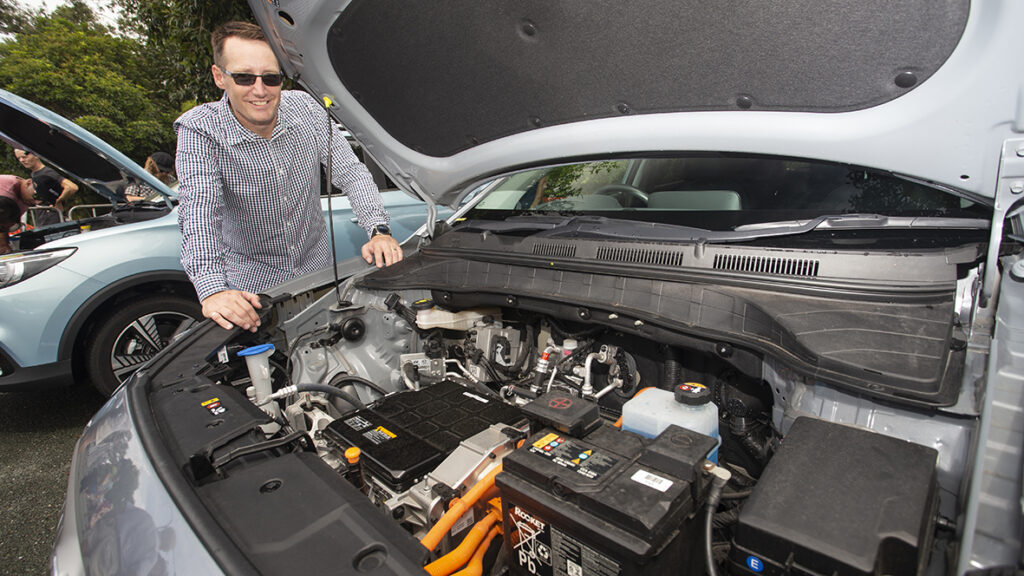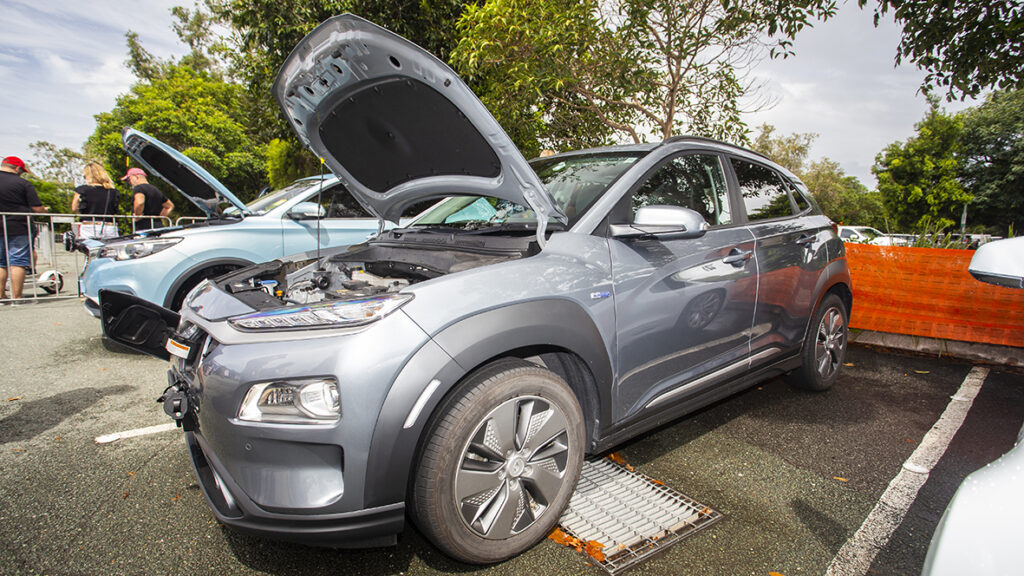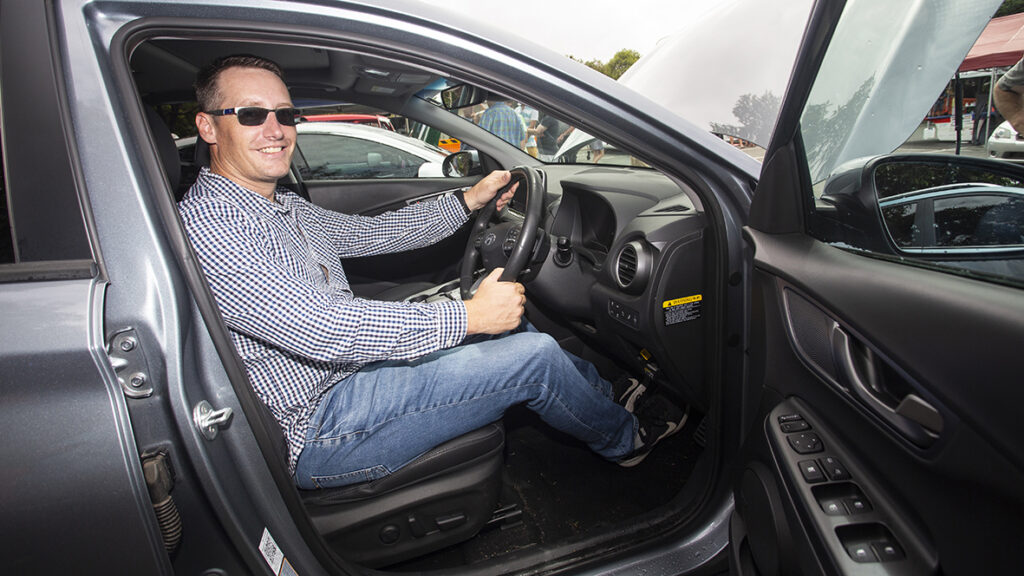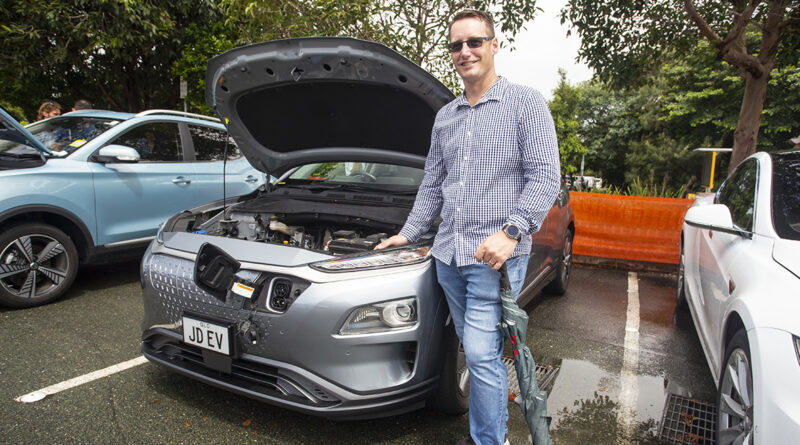EV Owner Review – 2019 Hyundai Kona Highlander Electric
Want to know what it’s really like to own an electric car? We ask owners who’ve been living with one for their honest opinions: good, bad or ugly.
Hailing from Redcliffe on the fringes of Brisbane, Queensland, Jon Day was one of the first buyers of the Hyundai Kona Electric. Its appeal included its 449-kilometre range and its cheaper purchase price (roughly $70,000 drive-away) than the Tesla Model S and Model X – the Model 3 not yet available.
Here are his thoughts after 30,000km of ownership.
Name: Jon Day.
Age: 41.
Profession: Queensland Ambulance Service – Supervisor.
Location: Redcliffe, Queensland.
Your EV: 2019 Hyundai Kona Highlander.
Owned since new? Yes.
Other cars you own: 1974 Ford Landau.
Why did you choose an electric car? My interest was sparked by MIT Professor Tony Seba. He suggested we are heading towards electric, autonomous, ride sharing transportation that has very low cost and that this will disrupt the current status quo. I started looking into what EVs were available in Australia and liked the concept. Speaking to my work colleagues about getting solar panels and their benefits, it was obvious that solar and an electric vehicle would work well together.

Why choose the Kona Highlander? I started looking at the start of 2019, the Kona was about to go on sale and it suited my requirements. The available Teslas – Model S and Model X – were far too expensive and I thought the Kona’s larger battery was a strong advantage over the similar priced BMW i3 and cheaper Hyundai Ioniq 28kWh. The Tesla Model 3 and (second gen) Nissan Leaf were not yet available, but I am happy that I went with the Kona.
How’s the transition to an EV been? Understanding the charging side of electric cars is important for new owners. Every month new charging stations are coming online; there are varying prices and charging speeds. On the driving side, there’s little difference over a petrol or diesel. EVs have obvious improvements over ICE cars that you notice when you take your first drive. The drive quality is vastly improved. The noise and vibration associated with an engine is gone. Also, the Kona has regenerative braking which essentially turns the spinning motor into a generator to charge the battery when the car is slowing down or descending a hillside. There are various settings available for the strength of the regeneration in the Kona and this takes a little getting used to but now I barely touch the brake pedal when driving.
What range do you get? This week when I charged to 100% the displayed range was 561km. In my experience the city driving range is comfortably 520-550km while highway driving, which consumes more, has a range of 430-460km at 100km/h. If you want to sit at 115kph in a 110kph zone, the range reduces to about 400km.
What’s your average energy consumption? My Kona has a lifetime energy consumption of 12.5kWh/100km or 125Wh per km after 30,000km.
What’s the drive experience like? The Kona is front wheel drive and if I had a choice, I would prefer rear wheel drive, but it isn’t really a concern. I have done quite a few long trips and the seats and ride quality are comfortable. In the wet though, the eco tyres are prone to spinning when accelerating off the mark. The instant acceleration is always a bit of fun when taking non-EV owners for a test drive.
The positives? I admit I didn’t by an electric car to lower my carbon footprint, but seeing other road users with cars spewing out exhaust fumes, I’m glad that people driving behind me don’t have to experience that. There is a very low cost for fuelling the car and the ability to charge at home is a great advantage.

The negatives? The only hurdle for EVs now is their price point. Once EVs are offered in the $20k-$40k price bracket, there will be no reason to purchase the non-electric alternative. Hyundai still has capped price servicing, even for their electric models which is a bit of a rort when there is very little involved past software updates and tyre rotation.
What do you use it for? Mostly daily driving, occasionally long trips.
What’s the furthest you’ve driven it? I attended the AEVA EV Expo in Sydney in 2019 which was approximately 950km one way. I left at 4PM on Thursday morning and arrived 5:30AM on the Friday. For the trip I required two stops and, on both occasions, I charged for one hour while I used the restroom, had a bite to eat and stretched my legs. The return journey was a repeat of the trip down.
Do you suffer range anxiety? Quite simply, no.
How do you charge it? I have a Myenergi Zappi charger installed at my home. Only the excess solar that is going back to the grid is used to charge my Kona. On longer road trips or when there is more than a week of cloudy days, I use a local DC fast charger.
Do you have solar at your property? Yes, 6.2kW system with 6kW inverter.
What are the running costs? It is registered on the cheapest level of registration which is $673, or $70 cheaper than a four-cylinder. Capped price servicing is $165 per 15,000km. Insurance is approximately $750. As for charging costs, I would guess that I have spent less that $100 to cover 30,000km due to charging at home using excess solar.

What’s the current mileage/kilometres and battery health? 31,100km, 100% SOH.
Any problems with it? None.
Did you buy it to save money? Not really. It is nice to own a car that doesn’t have much in the way of running costs but theoretically the upfront cost negates your lower running costs. If ownership was to extend to ten years, which is reasonably common, then there would be a point where price parity could be achieved.
What changes would you like to see as an EV owner? I would be satisfied if the Federal Government acknowledged the existence of EVs at all. We seem to be lagging behind the rest of the world and it doesn’t have to be that way. Locally, the Queensland Government has been a great supporter of electric vehicle uptake and they are to be commended for that. For Queensland, I would like to see more charging stations heading out from the coast into the interior on the major highways from Townsville, Rockhampton, and Toowoomba. The coast of Queensland has approximately fifty DC fast charging locations which is ample for the current amount EVs on the road.
Would you go back to an ICE car? I will never buy another non-EV again. Plus, I already have personalised number plates with EV on them so there is no turning back now.




